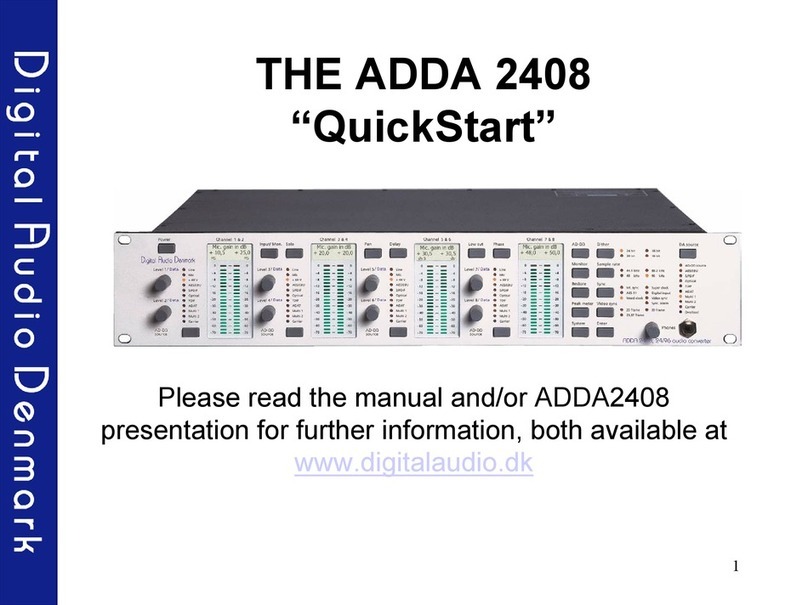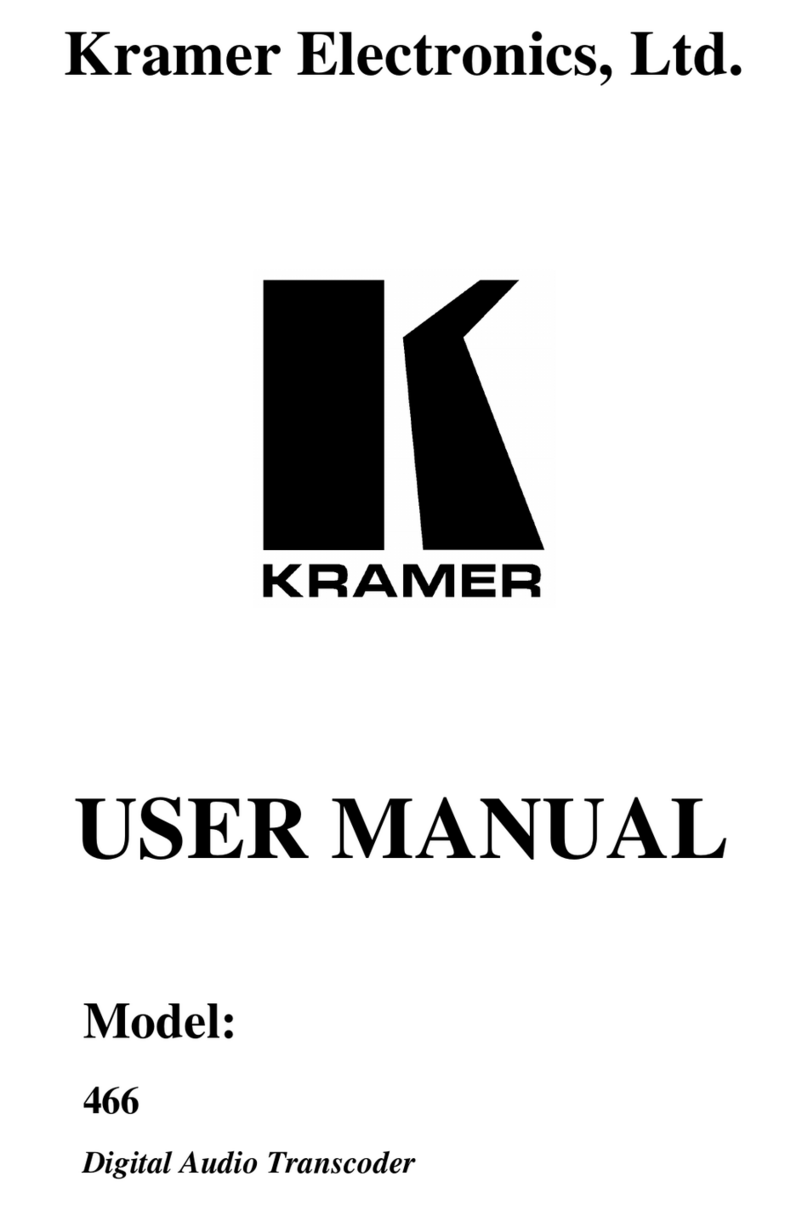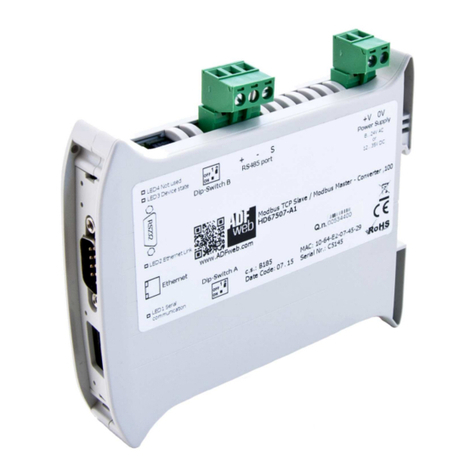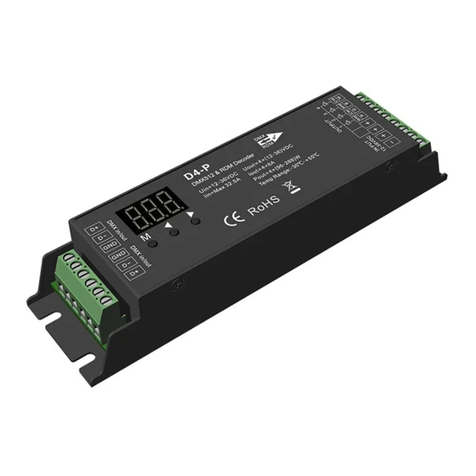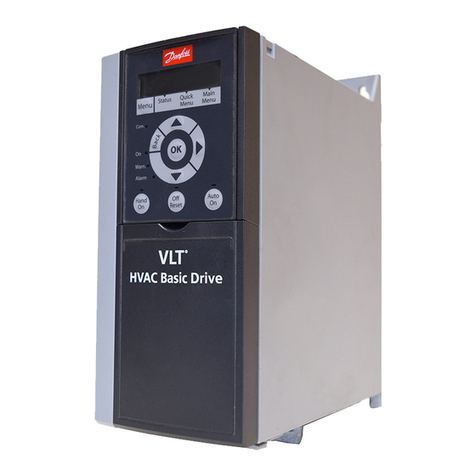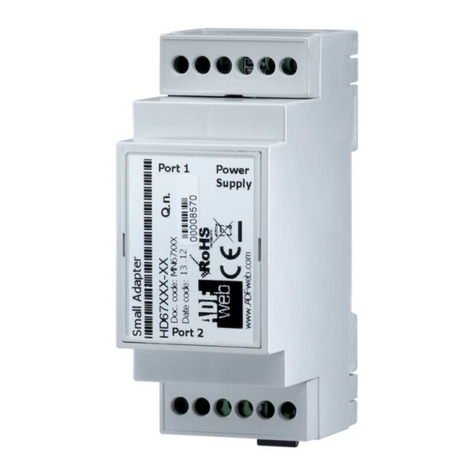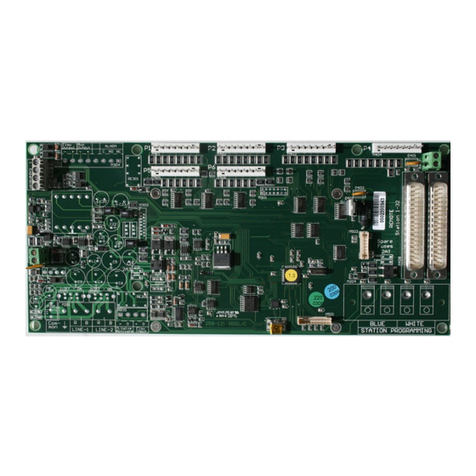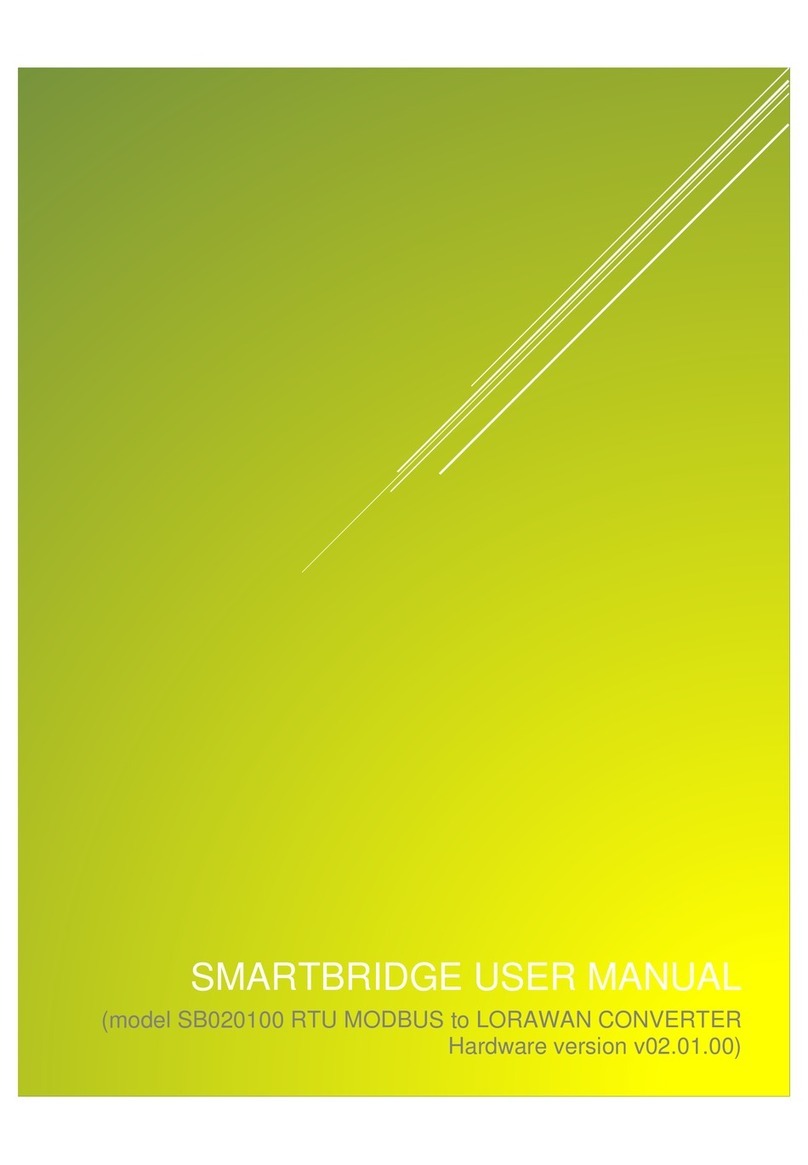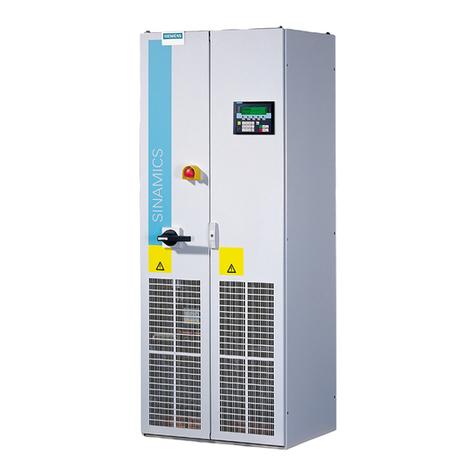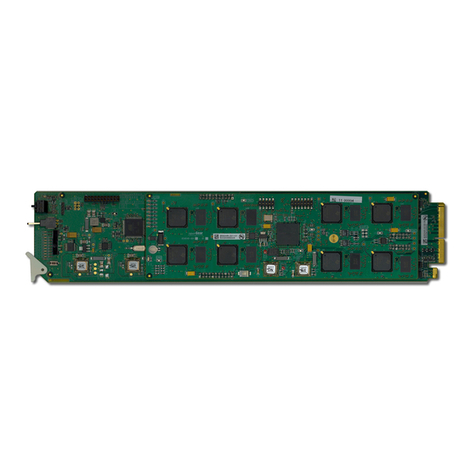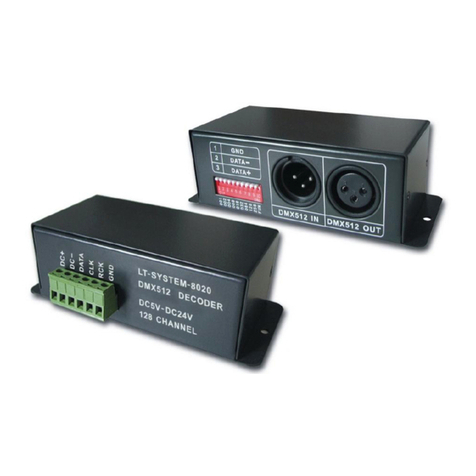Digital audio adda 2402 User manual

ADDA 2402
User manual

IMPORTANT SAFETY AND INSTALLATION INSTRUCTION
SAVE THESE INSTRUCTIONS
INSTRUCTIONS PERTAINING TO RISK OF FIRE, ELECTRIC SHOCK, OR INJURY TO PERSONS
WARNING – when using electric products, basic precautions should be followed, including the following:
1. Read all of the safety and installations instructions and explanation of graphic symbols before using the product.
2. The product must be grounded. If it should malfunction or breakdown, grounding provides a path of least resistance or
electric current to reduce the risk of electric chock. This product is equipped with a power supply cord having an equipment-
grounding conductor and a grounding plug. The plug must be plugged into an appropriate outlet which is properly installed
and grounded in accordance with all local codes and ordinances.
DANGER – Improper connection of the equipment-grounding can result in a risk of electric shock. Do not modify the plug
provided with the product – if it will not fit the outlet have a proper outlet installed by a qualified electrician. Do not use an
adapter which defeats the function of the equipment-grounding conductor. If you are in doubt as to whether the product is
properlygrounded,checkwithaqualifiedservicemanorelectrician.
3. Do not use this product near water – for example, near a bathtub, washbowl, kitchen sink, in a wet basement, or near a
swimmingpool,orthe like.
4. This product should only be used with a stand or cart that is recommended by the manufacture.
5. This product, either alone or in combination with an amplifier and speakers or headphones, may be capable of producing
sound levels that could cause permanent hearing loss. Do not operate at a high volume level or at a level that is uncomfortable.
If you experience any hearing loss or ringing in the ears, you should consult an audiologist.
6. The product should be located so that its location or position does not interfere with its proper ventilation.
7. The product should be located away from heat sources such as radiators, heat registers, or other products that produce heat.
8. The product should be connected to a power supply only of the type described in the operating instructions or as marked on
theproduct.
9. The power-supply cord of the product should be unplugged from the outlet when left unused for a long period of time.
When unplugging the power supply, do not pull on the cord, but grasp it by the plug.
10. Care should be taken so that objects do not fall and liquids are not spilled into the enclosure through openings.
11. The product should be serviced by qualified service personnel when:
A. The power supply cord or plug has been damaged, or
B. Objects have fallen, or liquid has spilled into the product, or
C. The product has been exposed to rain, or
D. The product does not appear to be operating normally or exhibits a marked change in preformance, or
E.The product has been dropped, or the enclosure damaged.
12. Do not attempt to service the product beyond that described in the user maintenance instructions. All other servicing
shouldbereferredtoqualifiedservicepersonnel.
13. WARNING - Do not place objects on the power supply cord, or place the product in a position where anyone could trip over,
walk on, or roll anything over cords of any type. Do not allow the product to rest on or be installed over cords of any type.
Improper installations of this type create the possibility of a fire hazard and/or personal injury.
ATTENTION : RISQUE DE CHOCK ELECTRIQUE NE PAS OUVRIR
CAUTION
RISK OF ELECTRIC SHOCK
DO NOT OPEN
CAUTION: TO REDUCE THE RISK OF ELECTRIC SHOCK
DO NOT REMOVE COVER (OR BACK).
NO USER-SERVICEABLE PARTS INSIDE.
REFER SERVICING TO QUALIFIED SERVICE PERSONNEL.
The lightning flash with arrowhead symbol,
within an equilateral triangle, is intended to
alert the user to the presence of uninsulated
"dangerous voltage" within the product's
enclosure that may be of sufficient magnitude
to constitute a risk of electric shock to persons.
The exclamation point within an equilateral
triangle is intended to alert the user to the
presence of important operating and
maintenance (servicing) instructions in the
literature accompanying the product.

© 1999 All rights reserved. Digital Audio Denmark and ADDA 2402 are registered
Trademarks of Digital Audio Denmark a/s.
Product features and specifications are subject to change without notice .
Digital Audio Denmark a/s shall not be liable for technical or editorial errors contained herein,
nor for incidental or consequential damages resulting from the furnishing, performance or use
of this manual.
Company Address: Digital Audio Denmark. PO Box 141. DK 2630 Taastrup.
No. 973000020 rev. 1

Contents
5
1. INTRODUCTION 7
WELCOME 7
OVERVIEW OF ADDA 2402 7
2. INSTALLING THE ADDA 2402 9
BEFORE YOU START 9
INSTALLATION 9
Connecting the Power Cable 9
Connecting the analog audio cabels 10
Connecting the digital audio cables 10
Connecting the digital sync input 10
USE THE ADDA 2402 AS ASMALL ANALOG/DIGITAL CROSS-FIELD 10
3. OPERATION 11
FRONT PANEL CONTROLS 11
Analog Input 11
Digital Input 11
Digital Output Source 11
Sample Rate 12
Dither 12
Sync. 12
Power 12
THE PEAK METER 12
4. BLOCK DIAGRAM 13
5. SPECIFICATIONS 15
ANALOG-TO-DIGITAL CONVERSION 15
DIGITAL-TO-ANALOG CONVERSION 17
DIGITAL-TO-DIGITAL CONVERSION 19
GENEREL 21
6. References 23
7. Appendix, Distortion Effects from Aliasing in Digital Audio 25

6

1. Introduction
Welcome
Congratulations, and thank you for purchasing the Digital Audio Denmark ADDA2402 audio
converter. You have in your possession an extremely capable audio converter, which enables
you to perform high-end analog-to-digital, digital-to-analog and digital-to-digital conversion
of audio signals.
Overview of ADDA 2402
The ADDA2402 is a full duplex converter, which can perform independent simultaneous
analog-to-digital (A/D), and digital-to-analog (D/A) conversion between analog audio signals
and AES/EBU or S/PDIF digital audio signals. The digital interfaces comply to AES31.
The A/D converter converts an analog audio signal to a high quality digital signal with a
sample-rate of 32 kHz, 44,1 kHz 48 kHz, 64 kHz, 88,2 kHz or 96 kHz, a noise floor below
117 dB(A)2
at 44,1 Khz sampling, and a THD+N below 107 dB at 6 dBu input level.
The input level can be monitored on the Peak Programme Meter (PPM) at the front, and the
input can be selected to be either the XLR connectors or Jack connectors.
The A/D conversion is 24 bit. Depending on the conversion application the A/D converter
resolution can be reduced to 20 bit, 18 bit or 16 bit by adding psycho acoustic dither 3to the
signal.
The bandwidth of the converted signal is equal to half the sample-rate, giving a bandwidth
from 16 to 48 kHz. The filters in the A/D converter assure that no signal is present above half
the sample-rate. This means that no aliasing distortion is introduced in the A/D converter.
Having no alias components in the digital signal eliminates the risk of generation of Alias
Intermodulation Distortion (AID)4.
The D/A converter converts a digital audio signal to a high quality analog signal having a
dynamic range better than 117 dB(A) at 44,1 Khz sampling, and a THD+N below 90 dB at
6 dBu output level.
You can chose between three digital input sources, either a professional AES/EBU signal on
XLR connectors, a consumer S/PDIF signal on Phone connectors or an optical S/PDIF signal
on a TosLink connector.
The D/A converter automatically adapts to the sample-rate of the incoming digital signal
which can be 32 kHz, 44,1 kHz 48 kHz, 64 kHz, 88,2 kHz or 96 kHz.
The ADDA 2402 can also be configured as a digital-to-digital (D/D) converter for sample-rate
conversion (SRC) of a digital input of a given sample-rate and format to a digital output of an
other sample-rate and format.
The converter can do sample-rate conversion between any of the six sample-rates from 32
kHz, 44,1 kHz 48 kHz, 64 kHz, 88,2 kHz to 96 kHz, and convert between the professional
and the consumer AES/EBU format.
ADDA 2402 has high precision internal oscillators with a stability of +/- 5 parts per million
(PPM) controlling the sample-rates. The ADDA2402 can also be synchronised to an external
reference signal complying with AES 115.
1Please refer to section 5, references for an explanation of AES 3.
Please refer to section 3, The peak meter for a description of the input levels and the dB
notification.
3Please refer to section 5, references for an explanation of the psycho acoustic dither.
4Please refer to Appendix 1 for a description of AID.
5Please refer to section 5, references for an explanation of AES 11.
7

8

SP/DIF
OPTICAL
SP/DIF
OPTICAL
Digital out Analog in
LR
AES/EBU
AES/EBU Digital in Analog outLR
Ext. sync
L
RL
R
AC POWER
CONNECTOR
MAIN POWER
SWITCH
FUSE
HOLDER
EXT. SYNC
AES/EBU INPUT
OPTICAL S/P DIF
OUTPUT
S/P DIF
OUTPUT
AES/EBU
OUTPUT
OPTICAL S/P DIF
INPUT
S/P DIF
INPUT
AES/EBU
INPUT
BALANCED
ANALOG OUTPUT
SINGEL ENDET
ANALOG OUTPUT
BALANCED
ANALOG INPUT
SINGEL ENDET
ANALOG INPUT
1. Installing the ADDA 2402
Here is a quick description of all the basic things you need to cover to get started with your
ADDA 2402.
Before You start
· Make sure the ADDA 2402’s voltage matches the voltage in your location. The ADDA
2402 is labelled on the AC power connector with the main voltage setting which can be
either 110-120V, 220-240V or 110-240 V at 50-60 Hz.
· Set your ADDA 2402 on a hard and dry surface or mount it onto a 19” rack, and leave
plenty of room for ventilation.
· In order to meet the EMC requirements of Directives 89/336/EEC and 93/68/EEC, and in
order the obtain the high performance possible for the ADDA 2402, you must use
correctly shielded cable of good quality for all external connections, when installing the
ADDA 2402. For the power connection a normal un-shielded cable can be used. Make
sure that the XLR, Phono and Jack connectors have conductive houses connected the
shield.
· Make sure your sound system is at a safe volume level.
Installation
This section will take you through the installation of your ADDA 2402. We will describe the
power, audio and digital cable connections, which can be accessed on the rear panel.
Connecting the Power Cable
The ADDA 2402 runs on 50-60 Hz AC voltage, and is set from the factory to, 110-120 V, 220
-240 V or 110-240 V. Excessive voltages can seriously damage the ADDA 2402, so make sure
that your AC power matches the setting of your ADDA 2402.
When you connect the power use the cable you received together with your ADDA 2402 and
plug it into a grounded outlet.
If your power source does not have the standard three-hole outlet, you should take the time to
get installed a proper grounding system. This will prevent problems with audio hum, and will
reduce the risk of a shock hazard. Furthermore it is required that the converter is grounded in
order to fullfill both the safety requirements and the EMC requirements.
9

Connecting the analog audio cabels
After you have turned down the level on your sound system, you can rig the ADDA 2402’s
analog audio cables. You will find two balanced XLR input connectors marked L-Analog in-R.
On The right side of the XLR input connectors you will find two Jack input connectors marked
L/R for unbalanced input. The maximum input level for giving a full scale digital signal is +
18 dBu on the balanced input and + 4 dBu on the unbalanced input.
You can use either the XLR input or the Jack input as the analog audio input source, or you can
have both inputs connected. The active input source is selected on the front panel.
You will also find two balanced XLR output connectors marked L Analog out R. On The right
side of the XLR output you will find two unbalanced Jack output connectors marked
L/R. The output level equivalent to a full scale digital input signal is + 18 dBu on the balanced
output and + 4 dBu on the unbalanced output
The ADDA 2402 will generate an output signal on both the XLR and the Jack output
simultaneous, so you can interface to your mixing board and the analog input of a keyboard
simultaneously.
Connecting the digital audio cables
On the rear panel you will find a digital input section with an optical TosLink, an S/P DIF
input connector and an AES/EBU input connector, marked Digital in, Optical, S/P DIF and
AES/EBU.
Connect one, two or all of them to the digital output on your DAT recorder, your CD player or/
and your harddisk recording system, and use the front panel to switch between the input
sources.
You will also find a Digital Output section with an Optical TosLink, an S/PDIF output
connector and an AES/EBU output connector, marked Digital out, Optical, S/P DIF and AES/
EBU.
The ADDA 2402 generates an output signal on all digital output simultaneously, so you can
interface to the digital input on your DAT, keyboard or/and your harddisk recording system,
and use your DAT, keyboard and harddisk recording system to switch between them.
Connecting the digital sync input
On the left side of the main power connection you will find the AES11 external synchronisation
input connector, marked Ext. sync. If you are using an AES11 studio master clock, you can
connect this input to your AES11 master sync. output. The ADDA 2402 will be able to
synchronise the sample-rate to the sync. signal.
Use the ADDA 2402 as a small analog/digital cross-field
You can use your ADDA 2402 as a small analog/digital cross-field by connecting your
different studio equipment as shown below.
Mixer
HD Recorder
DAT Recorder
CD Player
Keyboard
S/P DIF IN S/P DIF OUT
AES/EBU
IN/OUT
OPTICAL
IN/OUT
XLR
IN/OUT
JACK
IN/OUT
Analoginput Digitalinput DigitalOutput Source SampleRate Sync
XLR
Jack Analogin
Digitalin
S/PDIF
Optical
Carrier
32
44,1
48
64
88,2
96
Power
L
R
-60 -50 -40 -30 -20 -16 -12 -8 -4 0
-60 -50 -40 -30 -20 -16 -12 -8 -4 0
Int.sync
Ext.sync
Digitalinput
AES/EBU kHz
kHz
kHz
kHz
kHz
kHz
Dither
20bit
18bit
16bit
24bit
Rec
DAT
10

2. Operation
When you have connected the power and the audio cables, you can activate the main switch
on the rear panel in order to turn on the ADDA 2402.
Analog input Digital input Digital Output Source Sample Rate Sync.
XLR
Jack Analog in
Digital in
S/P DIF
T DIF
Carrier
32
44,1
48
64
88,2
96
Power
L
R
-60 -50 -40 -30 -20 -16 -12 -8 -4 0
-60 -50 -40 -30 -20 -16 -12 -8 -4 0
Int. sync
Ext. sync
Digital input
AES/EBU kHz
kHz
kHz
kHz
kHz
kHz
Dither
20 bit
18 bit
16 bit
24 bit
Analog input
selector Peakmeter Digital input
selector Digital output
source Sample rate
selector Dither
selector Digital sync
selector Power
switch
After start-up the ADDA 2402 has to calibrate for about 20 seconds. It is recommended to
leave the ADDA 2402 on for approximately 5 minutes in order to warm up, and then activate
the sample-rate selection or digital input source switch. This will cause the converter to
recalibrate, and improve the dynamic range in a region of 1 to 2 dB. During the start-up
calibration process the –60dB LEDs of the PPM lights up, and the Int. Sync and Ext. Sync
LED will blink slowly.
The ADDA 2402 has a non-volatile memory system enabling the converter to remember the
active settings. After a power up, the ADDA 2402 will restore the settings from before it was
powered down.
Front Panel Controls
The buttons on the front panel control the mode of operation of the ADDA 2402. All settings
are shown by light diode indicators (LEDs). Each time a button is activated the corresponding
mode will change between the possible settings.
Analog Input
On the Analog Input button you can switch between the balanced XLR input and unbalanced
Jack input. The input signal will be converted to a digital signal when the Digital Output
Source mode is set to analog in. The digital signal is available on the AES/EBU, S/PDIF and
the optical output connectors.
Digital Input
On the Digital Input Source button you can select which of the digital inputs you would like
to be active. You can choose between AES/EBU, S/PDIF and Optical (TosLink). The digital
input chosen will always be converted to an analog signal and sent to balanced and
unbalanced analog output connectors. This means the DA converter in the ADDA 2402 will
always be active, if there is a digital input signal, no matter what other mode you use for some
of the other buttons (except the power button of course).
If there is a valid digital input signal on the selected digital input, the “Carrier” LED will
light up.
Digital Output Source
On the Digital Output Source button you can choose between analog and digital input. If you
choose analog input, the ADDA 2402 will convert your analog input to a digital output. If you
choose digital input, the ADDA 2402 will work as a sample-rate converter, and convert the
digital input to the sample-rate you have choosen on the Sample Rate button.
11

Sample Rate
On the Sample Rate button you can select the sample-rate of the A/D converter between 32
kHz, 44.1 kHz, 46 kHz, 64 kHz, 88.2 kHz and 96 kHz. When a sample-rate has been selected,
the A/D converter will take about 3 seconds to calibrate before it is ready for operation. The
sample-rate LEDs will always show the selected sample-rate. When an external
synchronisation is selected via the Ext. sync button, the sample-rate LEDs indicate the
sample-rate of the received external synchronisation signal.
Dither
On the Dither button you can select the amount of dither added to the audio signal when
sampled by the A/D or the D/D converter. The dither setting has to correspond to the bit
resolution of the digital system to which the digital output of the converter is connected. If the
audio signal is sampled in 24 bit resolution and connected to a 16 bit hard disk recording
system, the noise behaviour of the recorded signal will not be optimal, and a clicking in the
sound can occur. Therefore it is important to set a correct bit resolution.
Sync.
On the Sync. button you can select the synchronisation source for the A/D converter sample-
rate. The source can be Int. Sync which is the internal +/-5ppm precision oscillator. External
synchronisation, which is the AES11 reference, signal connected to the Ext. Sync. input
connector on the rear panel. Finally, the synchronisation source can be the digital input
selected via the digital input button. If no Ext. Sync or digital input source is connected to the
ADDA 2402 the source can not be selected via the Sync. button. If a selected external
synchronisation source fails, the ADDA 2402 will automatically default to Int.Sync.. If the
signal is re-established the ADDA 2402 will automatically switch to the selected source
unless the synchronisation mode has been changed.
It is possible to detect the sample-rate of an incoming digital signal. Set the digital Sync
selector in digital input mode and use the Digital Input selector to select the digital input
source you want to detect. The sample-rate LEDs will now indicate the incoming sample rate.
Please note that an incoming signal with a sample-rate of 64 kHz will be indicated as a 48
kHz signal, because 64 kHz is not defined in AES3 as a valid sample-rate (however the
converter will D-to-A convert an incoming 64 kHz digital signal correctly).
Power
On the Power button on the right side of the front panel the converter can be set to a stand-by
mode, where the power to the electronic circuits are disabled. By pressing the Power Button in
stand-by mode, the converter re-enters the operation mode, with all power restored. If the
main switch on the rear panel is switched off there will be no power on the ADDA 2402.
The Peak Meter
The ADDA 2402 is equipped with a very precise Fast Peak Programme Meter (PPM) for
monitoring the level of the analog input signal. The PPM indicates the fast peak value of the
signal with an integration time of 10ms for full scale reading according to IEC 268-10. The
meter has a hold time of 1 second for levels from –12 dBFS to 0 dBFS. Levels below -12 dBFs
has no hold function.
The peak meter reads out the fast peak value of the input signal in dB full-scale (dBFS), where
reading is relative to the full-scale value of the digital signal. This means that for the XLR
input an analog level of +18 dBu, which is 6.16Volt RMS, will give a 0dBFS reading. A red
LED indicates 0dBFS. For –20 dBFS to 0dBFS the readout resolution is 2dB. From –12 dBFS
to –2dBFS the readout is indicated by green LEDs.
12

3. Block diagram
The following figure shows a block diagram of the ADDA 2402.
13
The peak meter can store the highest peak in a recording by pushing the analog input selector
rapidly twice. The diode for XLR or Jack will flash, and the highest peak will continue to
light up. To release the peak meter just press the analog input selector rapidly twice again
It is recommended to adjust the input signal to a maximum, peak value of –12dBFS. This
means that the meter normally reads out ‘green’ values. In this way a 12 dB headroom is
preserved, thus giving a nominal input level of +6dBu (1.55 V RMS). The meter will read
down to –60 dBFS, but still the A/D converter will have a dynamic range better than 116 dB
(A). With a 12 dB headroom, the noise floor will thus be below 104 dBrel(A) to the nominal
level of 6dBu (0dBrel).
24 bit
ADC
XLR Amp
in+
in-
Amp
in
Jack
+18dBFs
Fast
Peak
data
clock
Input level L/R
+4dBFs
Analog Input Source:
-XLR input
-Jack input
Dither:
-24 bit
-20 bit
-18 bit
-16 bit
AES/EBU
Input
optical
Optical
input
AES/
EBU
AES/EBU
XLR
S/
PDIF
S/PDIF
Phono
clock
data
status
+
-
Digital Input Source:
-AES/EBU
-S/PDIF
-Optical
XLR
Jack
24 bit
DAC
Clock
data
status
de-
emphasis
Amp
Amp
out+
out-
out
data
clock
status
TOS
Link
AES/EBU
S/PDIF
S/PDIF
Optical
AES/EBU
XLR
S/PDIF
Phono
+
SRC
Option
+
-
data
clock
Analog Input Section
Analog Output Section
Digital Input Section
Fs = 32 kHz
44,1 kHz
48 kHz
64 kHz
88,2 kHz
96 kHz
Ext. sync
AES/
EBU
AES/EBU
Sync
XLR
+
-
osc
Sample Rate selection
File:adda_blok_2.vsd
Digital Master Clock
Analog Master Clock
Digital Output Source:
-Analog input
-Digital input
Digital Output Section
Digital Output Source:
-Analog input
-Digital input

14

Analog to Digital Audio Conversion
Cross-talk:
· Cross-talk at 997 Hz, -3 db Fs < 110 dB
Frequency response
· Fs 32kHz, 18 Hz-13,5 kHz:±0.1dB
· Fs 44,1kHz, 18 Hz-18,8 kHz:±0.1dB
· Fs 48kHz, 18 Hz-20,0 kHz:±0.1dB
· Fs 64kHz, 18 Hz-25,0 kHz:±0.1dB
· Fs 88,2kHz, 18 Hz-35,0 kHz:±0.1dB
· Fs 96kHz, 18 Hz-38,0 kHz:±0.1dB
The frequency response has a Stop-band attenuation of 117 dB at half the sampling fre-
quency, thus eliminating high-frequency aliasing.
Dynamic range
The Dynamic Range is better than 117 dB (A-weighted) at 44,1 kHz sampling. The dynamic
range with a –60 dB FS input signal is better than 140 dB measured as a FFT.
Digital Audio Denmark a/s A-D Dynamic range@997 Hz
-160
+0
-150
-140
-130
-120
-110
-100
-90
-80
-70
-60
-50
-40
-30
-20
-10
d
B
F
S
20 20k50 100 200 500 1k 2k 5k 10k
Hz
4. Specifications:
15
Processing delay:
· Processing delay < 1,0 ms

THD+Noise
The THD+N vs. input amplitude is shown in the figure below. At a nominel input level of 6
dBu, the THD+N is below – 104 dB.
Digital Audio Denmark a/s A-D: THD vs Amplitude@997 Hz
at 48 kHz sampling
-130
+0
-120
-110
-100
-90
-80
-70
-60
-50
-40
-30
-20
-10
d
B
F
S
-50 +20-40 -30 -20 -10 +0 +10
dBu
Residual noise
The residual noise floor is better than –140 dB.
Digital Audio Denmark
A-D Residual Noise
-160
+0
-150
-140
-130
-120
-110
-100
-90
-80
-70
-60
-50
-40
-30
-20
-10
d
B
F
S
20 20k
50 100 200 500 1k 2k 5k 10k
Hz
Linearity
Linearity better than +/- 0,5 dB down-to –105 dB
Digital Audio Denmark A-D: Linearity @200Hz
-3
-2.5
-2
-1.5
-1
-0.5
+0
+0.5
+1
+1.5
+2
+2.5
d
B
F
S
-130
+0
-120
-110
-100
-90
-80
-70
-60
-50
-40
-30
-20
-10
d
B
F
S
-120 +0
-100 -80 -60 -40 -20
dBr
16

Digital to Analog Audio Conversion
Cross-talk:
· Cross-talk at 997 Hz, -3 dB Fs < 100dB
Dynamic range
The dynamic range is better than 117 dB (A-weighted) at 44,1 kHz sampling. The dynamic
range with a –60 dB FS input signal is better than 140 dB measured as a FFT.
Digital Audio Denmark
level: -60 dBFS.
-150
+0
-140
-130
-120
-110
-100
-90
-80
-70
-60
-50
-40
-30
-20
-10
d
B
u
020k
2k 4k 6k 8k 10k 12k 14k 16k 18k
Hz
D-A Dynamic range
17
Processing delay
· Processing delay < 0,85ms
Frequency response
· Fs 32kHz, 18 Hz–14,5 kHz:±0.1dB
· Fs 44,1kHz, 18 Hz–20,0 kHz:±0.1dB
· Fs 48kHz, 18 Hz–22,0 kHz:±0.1dB
· Fs 64kHz, 18 Hz–30,0 kHz:±0.1dB
· Fs 88,2kHz, 18 Hz–39,0 kHz:±0.1dB
· Fs 96kHz, 18 Hz–42,0 kHz:±0.1dB

THD+Noise
THD+N output signal is measured relative to a nominal output level of 6 dBu,
THD+N is below 90 dBr.
Digital Audio Denmark a/s D-A: THD+N vs Amplitude @997 Hz
at 48 kHz sampling
-120
-40
-115
-110
-105
-100
-95
-90
-85
-80
-75
-70
-65
-60
-55
-50
-45
d
B
r
A
-50 +0-45 -40 -35 -30 -25 -20 -15 -10 -5
dBFS
Linearity
Linearity better than +/- 0,5 dB down-to –105 dB. The output level is relative to 18 dBu.
Digital Audio Denmark D-A: Linearity @200 Hz.
-3
+3
-2.5
-2
-1.5
-1
-0.5
+0
+0.5
+1
+1.5
+2
+2.5
d
B
r
B
-120
+0
-110
-100
-90
-80
-70
-60
-50
-40
-30
-20
-10
d
B
r
A
-120 +0
-100 -80 -60 -40 -20
dBFS
18

Cross-talk:
· Cross-talk at 997 Hz, 3 dB Fs < 100dB
Processing delay:
· Processing delay 2,0 ms
Frequency response
44,1 to 48 kHz 18 Hz-19,0 kHz
44,1 to 96 kHz 18 Hz-21,0 kHz
Digital to Digital Audio Conversion
19
Dynamic range
When measured A-weighted the dynamic range is bet-
ter than 112 dB.
Linearity
Linearity better than +/- 0,5 dB down-to –110 dB.
Insertion gain:
At sample-rates from
32 to 48kHz: -1,0 dB
64 to 96kHz: -1,5 dB
Digital Audio Denmark A-D D-A Freqquency Response
-100
+20
-90
-80
-70
-60
-50
-40
-30
-20
-10
+0
+10
d
B
u
5k 50k10k 15k 20k 25k 30k 35k 40k 45k
Hz

20

General specifications
DIGITAL INPUTS AND OUTPUTS
Connectors: XLR, RCA Phono, Optical
Formats: AES/EBU, S/PDIF
Sample Rates: 32 to 96 Khz
Ext. Sync: XLR, 32 to 96 kHz
AES/EBU: Acc. to AES3
S/PDIF: Acc. to IEC 958
Ext. Sync input Acc. to AES11
Digital audio signal is available on all three digital outputs simultaneously.
ANALOG INPUTS
Connectors: XLR (pin 2 hot, pin 3 cold, pin 1 ground), Jack
Impedance (Balanced): > 5 k Ohm
Impedance (Un-balanced): > 20 k Ohm
Max. Input Level (Balanced) +18 dBu
Max. Input Level (Un-balanced) + 4 dBu
ANALOG OUTPUTS
Connectors: XLR (pin 2 hot, pin 3 cold, pin 1 ground, Jack
Impedance (Balanced): < 40 Ohm
Impedance (Un-balanced): < 20 Ohm
Max. Output Level (Balanced): +18 dBu
Max. Output Level (Un-balanced): + 4 dBu
GENERAL
EMC complies with: EN 50082, and EN 500022
Operating Temperature: +5 to 45° C
Dimensions (w,h,d): 19", 1U, 275 mm
Weight: 3,3 kg
Mains Voltage: 110 - 120 VAC or 220 - 240 VAC
Power Consumption: 10 Watts
Due to our policy of continous improvement of our products, Digital Audio Denmark reserves
the right to make feature and specifications changes without notice.
21
Table of contents
Other Digital audio Media Converter manuals
Popular Media Converter manuals by other brands

QUAD
QUAD Link D-1 owner's manual
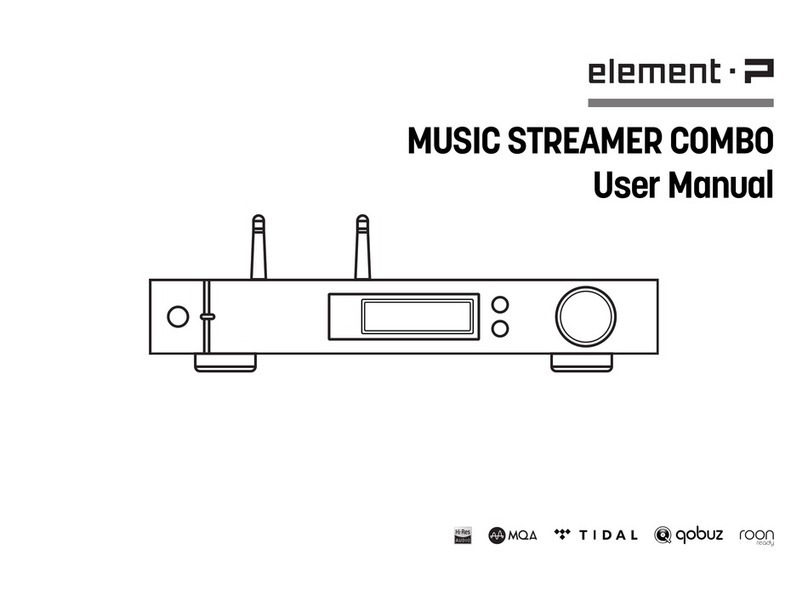
Matrix Electronic Technology
Matrix Electronic Technology element P user manual

HEIDENHAIN
HEIDENHAIN ERA 4202 Mounting instructions
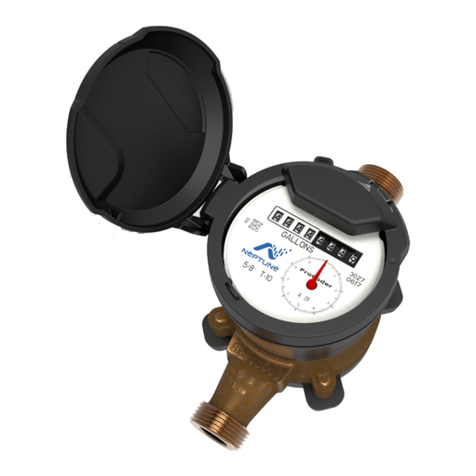
Neptune Technology
Neptune Technology ProCoder R900i Installation and maintenance guide
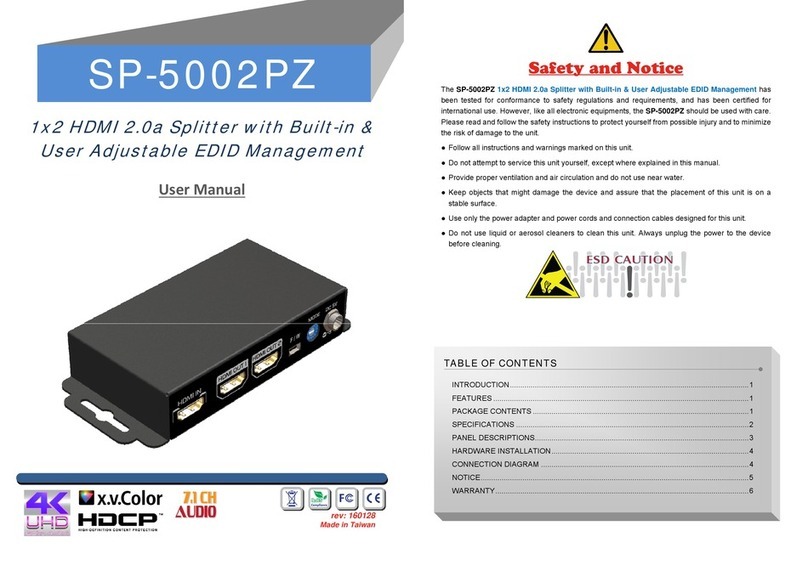
Gomax
Gomax SP-5002PZ user manual
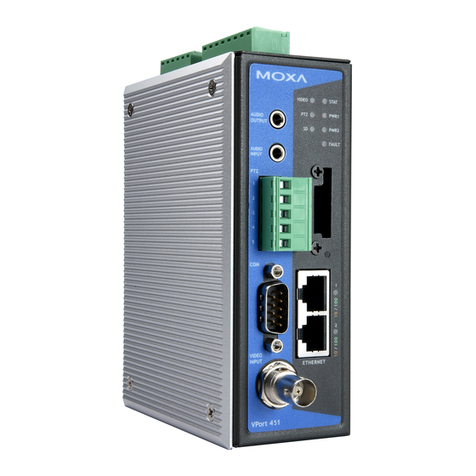
Moxa Technologies
Moxa Technologies VPort 451 user manual
